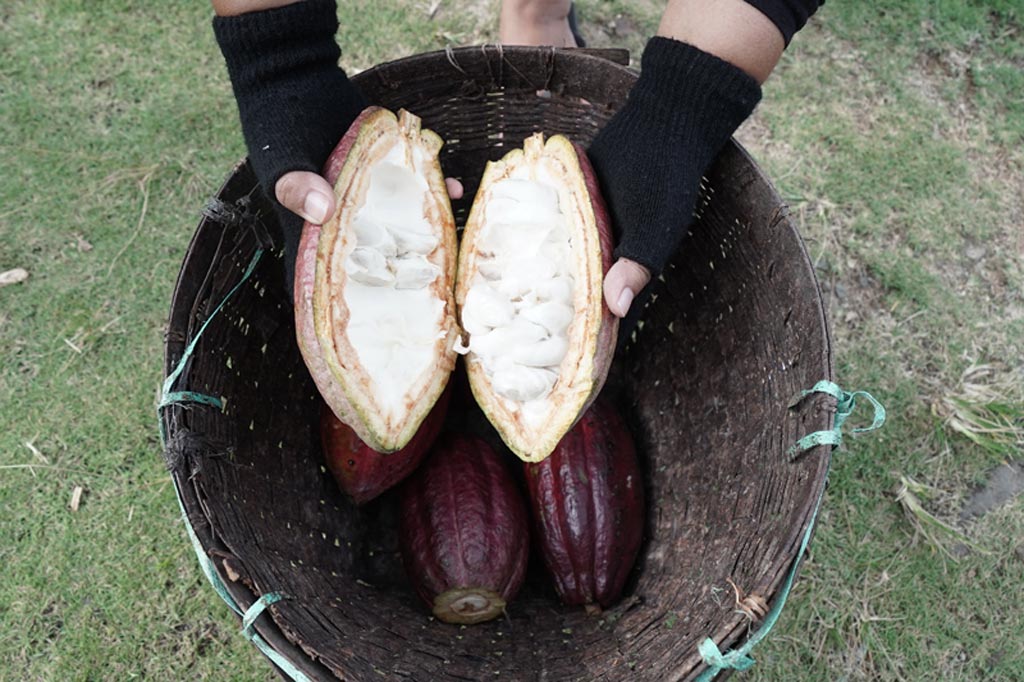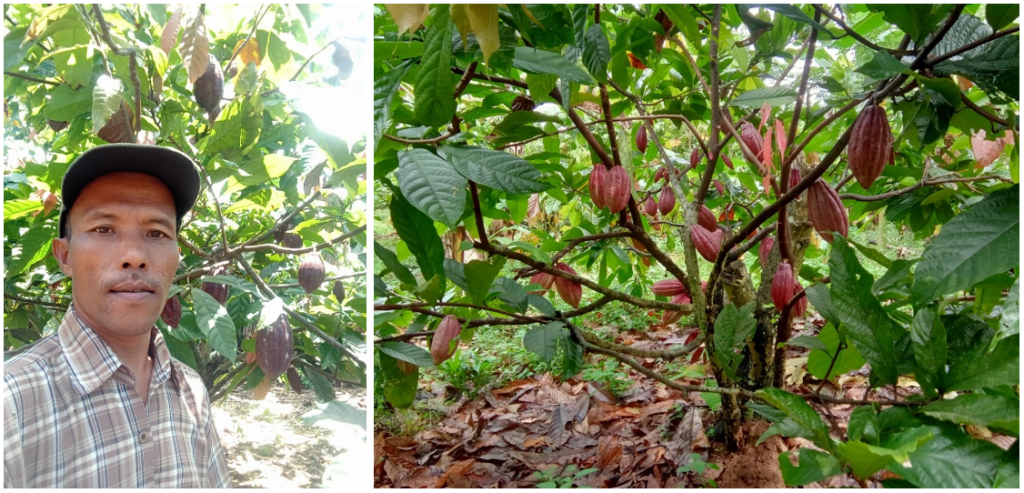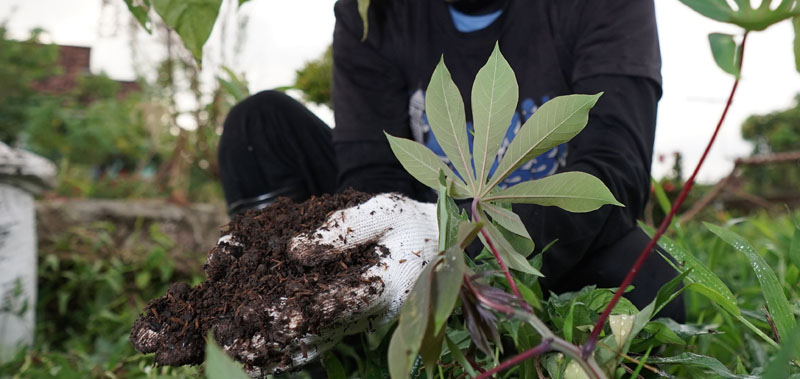Mr. Margono's Success in Switching to Compost for Cocoa Plants

The difficulty of access to subsidized fertilizer has been experienced by cocoa farmers in Pringsewu Regency, one of whom is Pak Margono (45 years). The problem of dependence on subsidized fertilizers, especially non-organic (chemical) fertilizers, also has a long-term impact that farmers are slowly starting to feel, namely damage to the soil on their agricultural land. Since being involved in training and mentoring the Sustainable Cacao Farmers and Organic Fertilizer Market (SCORE) project starting at the end of 2021, he has turned to compost to improve soil fertility and improve the quality of his cocoa plantations.
“The soil in our neighborhood has been damaged. So (we) repair the land by using compost to make our soil healthy and fertile again,” he said.

Mr. Margono is the husband of Mrs. Sartini (42 years) who has two children. He is a member of the Pure Farmers group in Purwodadi Village, Adiluwih District, Pringsewu Regency which is one of the groups involved in implementing the Rumah Energi Foundation (YRE) SCORE project in two districts, namely Pringsewu Regency and Pesawaran Regency, Lampung. This project was implemented with the support of Mondelez International Cocoa Life.
Mr. Margono has been a cocoa farmer since 2004. He owns around + 2,500 M2 of cocoa land, with around + 250 cocoa trees. His cocoa plants have been rejuvenated by grafting Sulawesi 1 & 2 and MCC02 since 2020. Initially, he used unfermented manure, because at that time he did not know how to make compost (fermentation process). He gained an understanding of making compost since he was involved in implementing the SCORE project at the end of 2021, while the experience of making compost was applied to cocoa fields starting in early 2022. The benefits of using compost and maintenance (fertilizing and spraying drugs) that he is currently experiencing are:
- Leaves smoother and greener;
- Healthy stems and not affected by stem borers;
- Cacao pods rarely experience pod rot and droop;
- Cocoa pods are rarely attacked by brekele disease— a disease that attacks cocoa pods so that the cocoa beans are damaged. Signs that the cocoa pods are exposed to breaks when the peeling is very difficult and requires a sharp peeler such as a machete. However, if you don’t get a bracket, stripping is easier and easier;
- Yields that have used cuttings, yield MCC 02, 2 times the weight of the local (regular chocolate).

The maintenance of the cocoa plants was carried out by Mr. Margono by providing compost and phonska fertilizers, as well as maintenance by spraying and removing unnecessary tree branches. Compost is self-produced by utilizing its cow manure and additional rice husk waste. The method of using compost for cocoa plants is as follows:
- Make a hole around the tree trunk, about 50-60 cm from the tree trunk, with a hole depth of about 30 cm;
- Put about 20-25 kg of compost per tree. Then the hole is closed again;
- Application of compost is carried out at the beginning of the rainy season and the end of the rainy season;
- About 6-7 tonnes of compost is needed for 2,500 m2. As for phonska fertilizer, it is about 100 kg per year.
The successful use of compost on cocoa plantations has shown progress and results. Mr. Margono is not alone in experiencing these benefits, there are five other farmers namely Mr. Adi, Mr. Slamet, Mr. Kinot, Mr. Parman, and Mr. Sukirno who have also switched to compost and are experiencing the benefits. From them we can learn about how to see the problem of subsidized fertilizers that occur become a momentum to find other alternatives that replace their functions, even to get more benefits from an economic and environmental perspective.
Written by: Deni Suharyono
Edited by: Fauzan Ramadhan

